Pam Torrey - Aligning Sales, Marketing and Lead Conversion - PODCAST TRANSCRIPTION
March 27, 2023 at 9:00 a.m.Editor's note: The following is the transcript of a live interview with Pam Torrey, Director of Marketing for Ingage You can read the interview below or listen to the podcast.
Speaker 1: Welcome to Roofing Road Trips with Heidi. Explore the roofing industry through the eyes of a long-term professional within the trade. Listen for insights, interviews, and exciting news in the roofing industry today.
Heidi J. Ellsworth: Hello and welcome to another Roofing Road Trips from RoofersCoffeeShop. This is Heidi Ellsworth and I am road tripping east today to visit with someone who I think is pretty dang amazing when it comes to marketing and looking at the whole marketing technologies. And that is Pam Tory with Ingage. Pam, welcome to the show.
Pam Torrey: Hi, Heidi. It's great to be with you.
Heidi J. Ellsworth: I'm really excited about this conversation. This is probably one of my top things is how do sales and marketing work together? And if they don't, all the bad things that can happen.
Pam Torrey: Most definitely. I think we've all seen the outcome when sales and marketing don't work together. So it's a really applicable topic right now.
Heidi J. Ellsworth: It really is. So before we dive into that, if you could please introduce yourself and tell us a little bit about Ingage.
Pam Torrey: Yeah, so as Heidi said, I'm Pam Tory. I'm the Director of Marketing at Ingage. I've been here for almost three and a half years, was hired in late 2019 to join the company. Ingage, for those of you who don't know, is the leading sales presentation platform for the home improvement industry. We help our customers to be able to create dynamic, interactive, engaging presentations. Share them with people who need them instantly through our cloud-based platform, and then measure their impact and help to make every rep their best rep through rich analytics on the backend of our platform. Just for some context too about where I come from, prior to working at Ingage, I was doing marketing, primarily lead generation and event management for a large fintech company based in Chicago where I live. Before that, I did B2B sales for Apple for a couple of years. And fun fact, I'm a little unorthodox in how I got here.
I actually have a bachelor's and master's degree in opera performance, so not your typical marketing director. I have a much more diverse set of skills that I've trained for that have nothing to do with this. So everything that I have learned, I've learned in the field essentially.
Heidi J. Ellsworth: I love it. And I tell you what, the creativity, the passion of opera of course, is perfect for home improvement.
Pam Torrey: Yes, we live for the drama.
Heidi J. Ellsworth: Yes. I love it. Well, okay, so let's talk a little bit about, we're wanting to talk about aligning sales and marketing and lead conversion. But first of all, let's talk about the way that roofing companies should be thinking about lead flow and sales funnels today. Because you know what? It's changed a lot. I've been doing this for a long time and before even 10 years ago, no one would even, "What's a funnel? How does that work?" So kind of talk about where we are today with all of this new way of thinking.
Pam Torrey: Yeah, so I think there's really been a paradigm shift in the last six to eight months that everyone's been experiencing. I think the smartest way I've heard to think about the lead flow and the sales funnel and how that works today is actually going back to 2019, not looking at 2021 or 2022. As a business owner, as a marketing leader, as a sales leader, 2021 and 2022 were kind of anomalies. They happened because of chaotic forces in the market as a whole. So if we go back and we think about the way we thought about leads in 2019, early 2020, we really thought about each lead as being precious. Each lead was something that we needed to treat with care because there weren't as many of them.
We had to really scrap and fight for each lead that we got, and we had to treat them like they were gold. And I think that there is a shift back to that. We're no longer under the deluge of more jobs than we can handle. It's more back to, "Okay, each lead that comes in is really precious to my team. It's really precious to the growth of my business." So what I've been talking about with our customers and what I've been hearing from influencers and folks on the manufacturing side is that everyone's trying to get back to their fundamentals. They're trying to get back to what is it that we do to get back to the fundamentals for lead gen and lead nurture? So speed to lead. What systems do we have set up in our tech stack to make sure that when a lead comes into my website or a lead comes into a third party tool that I'm using or comes in through my manufacturer's website, that I'm getting to them quickly. What's in my tech stack that supports the way my team does business?
So are you a one-call close? Are you multi-step? Do you send somebody out to go inspect before your sales rep gets out there? Does your sales rep handle everything? What's in your tech stack to make that work for you? And then how do you communicate with your customers? Do you prefer email? Do you prefer text messages? Is your customer younger? Is your customer older? Who are you talking to? Getting back to the fundamentals of figuring out who your ICP is, your ideal customer profile. From my perspective as a marketer, getting back to making sure your branding and your messaging is strong and consistent from lead acquisition all the way through the appointment. I know we're going to dig into some more information about why that's important, but I wanted to bring it up first just to make sure that it's out there.
Heidi J. Ellsworth: Well, I think you're right on. No matter how much marketing is changed, I will say in the last 30 years that I've been doing marketing and roofing, I really look at it and I can remember a lot of frustration of, "Well, we put this beautiful brochure, we put these beautiful things together." And the sales team has made their own, or they're not using it or they don't like it. Well, that was my fault as a marketer because I hadn't been able to bring the sales team to make sure we were providing the right collateral that they could really use to work through the sales process. But I think that's still one of those things because there also has to be education to the sales force of why that's important for them to use. So when we look at right now, articles, promotions, digital information, there is so much out there. What happens when that sales team doesn't use that material and comes up with their own messaging or their own collateral? It's not good.
Pam Torrey: No. So there's a little fact that I share with my team all the time. It's actually a statistic that we use in a lot of our presentations to industry influencers and to potential customers. Consumers form an opinion about your brand within eight seconds of seeing a post, an ad, hearing an ad for you on the radio or on a podcast, your website. It takes about eight seconds for them to form an opinion. That's not whether they like your brand or not. It takes eight seconds for them to form an opinion about the value of the products that you sell and your expertise. That's the opinion we're talking about here, not a yes or no like.
And so let's say that they've come in through your Instagram or through your Facebook, your social media. This consumer has already formed an opinion about your brand. It took them eight seconds to look at your ad. Maybe they've heard about you before, but they saw your ad, they clicked on it, they filled out a form, they're booking that appointment. And then your sales rep wanders into the appointment with messaging that's completely different from what they saw on that Facebook ad or that Instagram ad. Their materials don't look like the materials they saw on your Facebook and Instagram. That's a trust breaker.
That's a moment where the consumer says, "Wait a second. I thought I knew who this company was. I thought I knew what I was getting into. And now this guy comes in carrying materials that look like they were made in Microsoft Paint in 1998 versus this slick ad that I saw on Facebook and this great Facebook account I saw and this great website I saw. These materials don't line up. What's going on here? Does this mean that everybody from the sale onward is going to do shoddy work in my house?" They just don't know what to believe.
Heidi J. Ellsworth: Right. And some of it's conscious where everything kind of goes, "Wait a minute, there's a problem here." And then also I think a lot of it is unconscious. So you've lost that customer in the sales process because unconsciously they're not trusting you.
Pam Torrey: Most definitely. And something that I like to again talk about with our customers and in this industry specifically, this industry really has a golden opportunity with having these in-home appointments. So someone has probably read your reviews online. 93% of consumers say reviews influence their decision. They've probably read through your reviews, they've probably gone to your website. They've probably spent some time digitally stalking you, understanding who this business is. Maybe they saw an ad for you on YouTube. They've done some time online investigating your business. Maybe they've gone to your Better Business Bureau ratings. They've done their research. They want you to come into their home and validate their decision to have you there. They want you to come in and actually validate their decision to take that appointment with you. And if your materials do not match across your sales funnel and your marketing funnel, then you're not validating their decision there. And people love to be told that they're right. People love to be told that they made the right decision by choosing you.
Heidi J. Ellsworth: And then it allows that salesperson to go quickly to a consultative sale because they've got the trust. They've already established, you've seen us, you've researched us, we're here, you're right, we're the ones. Now let's figure out what we can do for you. And what are your needs? When a sales team gets into in-home presentation, how should they be using that trust? Because they're using the right materials and the right messaging. How do they use that trust to really take it to that next step and to build the sale to close it?
Pam Torrey: So sales teams really have, again, this golden experience of being able to be in front of their consumer. They get the chance to sit in front of their consumer and they can create a personalized experience for that consumer just by the way that they interact with them. 80% of consumers say that brands fail to understand them as individuals. There is no reason that a home improvement company that does an in-home sales appointment should ever be lumped into that 80% category.
You are in front of a homeowner. You have the opportunity to listen to them, to make them feel seen and heard and validated during their process. You have the opportunity in the moment to then respond accordingly. And if your company's providing you with the right kind of sales materials, and if you're using those sales materials correctly, you should be able to actively listen to your customer and respond to their questions in the moment with your sales materials. If you really know your pitch, if you really know your value propositions, the benefits of the products that you sell for the customer. This is the secret sauce of home improvement tales. It's getting that, that face-to-face interaction, that time with the customer where you can create a personal experience.
Now, I know someone out there is going to say, "But wait a second, I use the same presentation every single time I'm in the home. It's not personal. It's the same presentation. It's what my boss gives me." It's not about creating a fresh presentation every single time you go into the home. There's absolutely no need to create a fresh presentation every single time you meet with a different homeowner. It's about how you respond to the homeowner with your content, and that might be presenting in a different order. Maybe you don't follow the exact order that's prescribed to you in your sales manual. The customer is really concerned about warranty protections, and they're less concerned about installation because maybe this is their second roof they've had installed.
They know the deal. They're down. They get it. They're concerned about what are you going to do if this roof doesn't work? That's their concern, that's their pain. Maybe that's the section that you skip to and you spend the bulk of your time on. That way that homeowner's experience is validated. You're actively listening to them, you're answering their questions, and you're providing them with that personal experience that they crave before they give you 15, $20,000 and sign on the dotted line to come do their project.
Heidi J. Ellsworth: Right. No, I think that's so smart, because actively listening, you just said that and then having the materials in front of you that you can move that direction rapidly. Because I also believe as consumers, they don't want to spend three hours going through things, right?
Pam Torrey:Oh, Lord no.
Heidi J. Ellsworth: They've already done their research. They have a life. They have other things they want to be doing.
Pam Torrey: They do. They definitely do. And it's been proven that people's attention span wanes after 10 to 20 minutes of content. They're really not able to pay attention much longer than that unless you're providing them with something incredibly interesting. Unless you're using video, unless you're using interactivity and things that give them a little serotonin hit, you're not going to be keeping their attention. So yeah, you do need to be able to respond to their questions quickly and effectively. Otherwise, they're going to check out.
Heidi J. Ellsworth: Yeah, they're going to check out and move on. So I agree. I love that so much. So maybe, do you have a couple success stories from roofing companies that have used this, really have great synergies with sales and marketing using the technology like Ingage to really take it from that Facebook ad to a close?
Pam Torrey: Yeah. We have a customer we did a case study with in the last year. They're called Ridge Top Exteriors. They're based in Wisconsin and Florida, they have four locations. And they did some really interesting things over the last few years with their marketing and sales tech stack. So we did this case study with them actually in conjunction with a marketing partner that we work with. So full story about how you can come into a business as an operational leader, as a sales leader, and look at your funnel from start to finish. So they brought in this marketing partner of ours to help them to create ads that actually work. Not just ads that say, "Best roofer in town." But ads that actually speak to the pain points that their customers have. So if you think about a Wisconsin winter versus Florida, it's a very different beast depending on where you're living.
Also, they have different concerns, customers in those different markets. Additionally, if you're looking at consumers in different platforms, your audience on Facebook's probably going to be a little bit older. And they've probably got slightly different concerns about their home versus an audience that finds you on Instagram or TikTok, probably a little bit younger. They went in and worked with this company to build out a really strong digital marketing presence, really strong ads and focused on brand building and making sure that their marketing was all brand focused, so everything was in alignment. Then they brought Ingage in, and we were brought in for specifically their in-home sales process. And what was great about the synergy between the marketing messaging they were putting out on their social media, on their website and their Ingage presentation is every time that the marketing collateral changed, they were able to go in and quickly update their Ingage presentation to make sure that the messaging aligned and make sure that their branding was consistent.
So if they're running a promotion that they're talking about online across all their social channels, it's in the hands of their sales reps. Let's say that week they're really pushing hard for a specific kind of GAF shingle they've got too much of it in stock. It's what they want to move, and they don't have a lot of other options in stock and available. Change your marketing messaging to focus on that. And then on the backend, they're able to edit that sales presentation so that it better aligns with market forces, supply chain issues, price increases, that sort of thing. And by leveraging a really strong enhanced digital marketing presence and a sales presentation that could be flexible and meet the needs of the customer and speak to market forces, they actually saw a 3.58 point increase in close rate.
Heidi J. Ellsworth: Wow.
Pam Torrey: And a 12 point increase in their average ticket. And they were on track to do a 40% increase in revenue across the business.
Heidi J. Ellsworth: That's great. Wow.
Pam Torrey: If you look at your funnel, the whole sales funnel, you look at that whole thing and you're really paying attention to how you're talking to your customer through the entire funnel, you will see increases.
Heidi J. Ellsworth: Yeah, it makes sense. It's like we said, it's conscious and subconscious trust because people like consistency. They like to see the same thing and they have to see it numerous times to really engage with that. I love that story. How can Ingage really be that technology to help sync sales and marketing? And you answered that. I love the fact that you can change up on the platform and the presentations and engage. You also do this with manufacturers too, right?
Pam Torrey: Yes. So some of the ways that Ingage really makes life easier for marketing leaders and sales leaders is yes, if you change a promotion, if you're changing the way you're talking about a product, maybe you're having issues with getting certain products and you want to hide those pages in the presentation, you can do that. And as soon as your employee out in the field either is on data and allows for download or gets back to wifi and connects to wifi, they're forced to download the latest version of that presentation. So they'll always have the consistent content.
Another thing I always like to point out for folks is that our content creation platform, it's very snappy when people look at it, they're like, "Oh, do I have to code?" No, you do not have to know how to code. You don't have to know how to do anything. Our platform is really set up to be as easy to use, if not easier than most other presentation products out there. So your marketing resource, whether that's an internal marketing leader or if you have a contractor that you work with, or maybe it's your college-aged kid who comes in and helps you to update your sales materials once a quarter. They're capable of editing that presentation without needing to know how to code or do any design work outside of the application. So it does make it pretty easy to keep those synergies in line.
From a manufacturer perspective, it's great. The number one complaint I hear from manufacturers, well two complaints. Number one is that printing materials is heinously expensive. I don't know if anybody listening here has tried to have materials printed on really high quality cardstock or on high quality paper, but fun fact, there's been a supply chain shortage of paper. That's why some of my favorite book series have been delayed in getting released because there literally is not enough paper to print-
Heidi J. Ellsworth: Oh my gosh!
Pam Torrey: Some of these books. So can you imagine as a major international manufacturer trying to print materials having issues with just getting the kinds of paper that you need? It's insanity. And the other complaint I hear from them is that they don't really have control over versioning for materials that are out there. So let's take Owens Corning for example. We work with Owens Corning. We have a really close relationship with them. They want to make sure that all of their contractors, regardless of the tier, whether they're the smallest emerging contractor or the largest platinum preferred contractor, have the latest messaging around their products. Have the latest colors of their products and their presentation and the latest information about the quality of their products in their presentation. If you're printing materials or sending out a digital PDF of those materials, you have absolutely no control over what your contractors are telling customers.
So we work with Owens Corning and other major building product manufacturers like them to get that content disseminated to their contractors quickly and at a much lower cost than printing tons and tons and tons of brochures and flipbooks and paper materials. So there's no more waiting around to get those materials shipped to you. If you are looking for the latest colors, they should be there in your presentation, just make sure you update them. And what's great for our customers is that we work with a ton of different building product manufacturers. So if they do more than just roofing, if they do siding windows, we work with a few deck companies, if they do bathrooms. I know a lot of our folks in the upper-Midwest and the Northeast do bathrooms during the winter.
Heidi J. Ellsworth: Right. Yeah, makes sense.
Pam Torrey: There's nothing worse than trying to rip a roof off a house in a Chicago winter. So they do bathrooms. We probably work with some of those manufacturers as well, so they're able to get a lot of content.
Heidi J. Ellsworth: Well, and I love it. New products, new initiatives, new promotions, anything that they're doing, they can have right in that sales process. And it makes so much sense. And so, one of the things that I love that Ingage does is not only does it deliver this amazing presentation that can be modified and can be built out and can do all that, but it gives analytics and data in the backend. And so if you have that rogue salesperson who is not using the materials or has that, I loved your 1990s Paint flyer. You're going to know it, right?
Pam Torrey: Yes.
Heidi J. Ellsworth: From just looking at the analytics.
Pam Torrey: So I like to step away from the Big Brother side of things with the analytics and move more into accountability and also understanding. I think as managers, it can be really easy to say, "Oh, that guy's just not doing his job." If someone's struggling, if John Smith, your new rep has been selling for six weeks and his close rate is 15%, that's not great. And as a manager, it's not only your job to provide that warning and more stick-like coaching, but it's also your job to seek to understand. And it's your job as a leader to get in there and say, "Okay, John, you've got a 15% close rate. What is going on?"
And you can't ride along with John on every single appointment if you have 20 other reps. Those other reps need your time. You're hiring new people, they need your time. So how are you going to work with John to not only hold him accountable for his 15% close rate, but also figure out what he could be doing better to get that close rate closer to 30-40%? And that's really where the analytics come in. So I like to position it as you can not only see what your underperforming reps are doing and help them to be better, but you can also see what your top reps are doing and coach to that behavior.
So if Dan, your other rep has a 45% close rate on every lead that you throw in his way, that's great. You want to can go into the analytics, see what does Dan spend his time on? Heat map it in the presentation. And you can see over the last month, Dan spent the bulk of his time talking about our installation process, and John spent the bulk of his time talking about a section of our company story. Okay, well, John's got a 15% close rate. Dan's got a 45% close rate. Let's talk to John about spending more time on installation and allaying customer fears around the actual process of installing the roof on their house. And that might get his close rate up closer to Dan's. So I like to look at it from the perspective of making every rep that best rep versus just being Big Brother and stalking them through their appointments.
Heidi J. Ellsworth: I love that. That's how you mentor, that's how you educate. That's ongoing training. It also puts pressure on the market, and I shouldn't say pressure, but it also keeps the marketing arm of it accountable too. Because if there are new promotions, if there are new things, it needs to be in that presentation. Now you get rid of that age-old problem of salespeople saying, or marketing people saying, "Well, I told them, but you didn't tell me." Right? So now it's all right there. I love that.
Pam Torrey: Oh, we've all lived that life.
Heidi J. Ellsworth: Oh yeah.
Pam Torrey: We've all been there.
Heidi J. Ellsworth: And I've been guilty of it more than once. So I think that is really important to also understand that again, the marketing and sales are going to need to work together on these presentations to making sure that everybody's on the same page and then getting the updates.
Pam Torrey: Absolutely. And yes, the analytics do play back into that. If you're finding that every single rep is skipping over a specific section of the presentation because it's just not speaking to the customer you as a sales leader need to go have a conversation with your marketing leader. Or whoever created that presentation for you and say, "Hey, this section's clearly not working for the team. Let's sit down and get some feedback from the team on why it's not working and see if we can't make this better and make it more of an enablement tool for the team versus just something that's hogging up space in their presentation."
Heidi J. Ellsworth: As a marketing person, I love that. I love analytics.
Pam Torrey: Yes, it takes the guesswork out of it. And I think it also does bring down the blame game. I know we've all been there. Sales and marketing leaders often get pitted against each other, and that's not how things should work in an ideal world. Sales gets angry that marketing's not listening to them about the kind of content they need. Marketing's angry because sales is out there, cowboying their own materials and making their own stuff that's not aligned with the branding. And if you have data across the entire funnel that sort of eliminates the feelings from the decisions and lets you go back and say, "Okay, every single rep is skipping this section, all leads that are coming in from this source are closing. All leads coming in from that source, we're not closing. So what's the difference here?" The data allows you to make those decisions.
Heidi J. Ellsworth: Yeah, and that's exactly what you need. And also everybody wants it to be successful. So at the end of the day, that's all that everybody cares about.
Pam Torrey: Yeah, we're all rowing in the same direction.
Heidi J. Ellsworth: Yeah, to have that data makes it all happen. So I love all this. How can contractors get more involved with Ingage? What's the steps? How do they do this?
Pam Torrey: Yeah, so the first step is to talk to our sales team. You can get in touch with them by emailing sales@ingage.io. That's I-N-G-A-G-E dot I-O. The "dot io" is very important. "Dot com" will take you somewhere else. Or going to ingage.io/get-a-demo. Or if you just go to ingage.io, we have a big flashing button up in the right corner that's going to tell you to go get a demo. So that's the first step, meet with our sales team. What's great is that if you come to us with a list of products that you sell, we can go back and figure out what content you may already have access to.
So if you're an Owens Corning contractor, for example, and you want to sign up with Ingage, we have content ready for you right now. If you sell James Hardie siding, we have content for you right now. If you sell LP SmartSide, we have content for you right now. So they'll be able to get you a list of content that you have access to and get you some next steps on creating your own company story presentation and being able to build that value. So they're the ones who can help you out. Just make sure to let them know that RoofersCoffeeShop sent you.
Heidi J. Ellsworth: Oh, yes, please do. I love that. One of the things I think about too is there's all these demos and people, it is sometimes hard. You think, "Oh, I don't have time to take a demo." But going back to what we were talking about earlier, bringing your head of sales and your head of marketing, sitting down over lunch and doing a demo together so that you're already creating that synergy ahead of time, I think makes so much sense. Sometimes these decisions get made at an upper level, and by the time they get to the sales and marketing team, everyone's like, "What is this? Why should we do that?" So yeah, it's really important.
Pam Torrey: We prefer to have the stakeholders there, the people who are going to be in the product. And I also love when people bring whoever is in charge of their content to a meeting. So who's going to be building your presentation? Who does build your presentation currently? Are you happy with the person who's currently building your presentation?
Heidi J. Ellsworth: Yeah.
Pam Torrey: These are things that we want people to bring and also bring their questions. We have a lot of customers who come to us and say, "My sales process is kind of stale. Can you help me to find somebody to juice it up, reinvigorate it?" We work with basically every sales methodology company in the industry, and a lot of them have presentations on our platform that they can go ahead and help you customize to be able to sell with their step selling processes. So there's a lot of opportunity there for synergy across ownership, sales leadership, marketing leadership, sales training. Those are not always the same people.
Heidi J. Ellsworth: No.
Pam Torrey: Sales leadership and sales training's not always the same person. Marketing leadership and content creation are not always the same person. So I encourage you to bring your friends.
Heidi J. Ellsworth: And that makes so much sense. And to really look into and ask, like you said, ask those questions of the partners that you work with right now because they are very impressive and can help put that big picture together.
Pam Torrey: Yeah, they definitely can. And we have a great list of building product manufacturers we work with. We're always expanding it. So if you're curious and just want to know, feel free to shoot us an email and we can let you know if we work with the folks that you work with.
Heidi J. Ellsworth: Yeah. I love it, Pam. Thank you. Thank you so much. This is my kind of Roofing Road Trip. I love this conversation.
Pam Torrey:
We love a good marketing conversation.
Heidi J. Ellsworth: Oh yeah. And bring some sales into it. Ah, perfect. So well, thank you so much for being here today, sharing all this wisdom. And for everyone out there, you can find all this information on the Ingage directory on RoofersCoffeeShop and on MetalCoffeeShop.
Pam Torrey: Yes.
Heidi J. Ellsworth: You can get the information there. How to get ahold of them, check out some of the case studies, some great articles, talking about great content. You guys have perfect stuff out there. And also some in the past in podcasts. Be sure to check them out. So, Pam-
Pam Torrey: Yes, some nuggets of wisdom from our CEO Dean on some previous podcasts. Highly recommend listening to those.
Heidi J. Ellsworth: Really good, really good stuff. So thank you again for being here today, and I'm looking forward to having you back again.
Pam Torrey: Thanks, Heidi. It's great to be here.
Heidi J. Ellsworth: And thank you all for being here today. Be sure to check out all of our podcasts under the read list and watch section under podcasts in Roofing Road Trips, or on your favorite podcast channel. Be sure to subscribe and set those notifications so you don't miss a single episode. And we will be seeing you next time on Roofing Road Trips.
Speaker 1: Make sure to subscribe to our channel and leave a review. Thanks for listening. This has been Roofing Road Trips with Heidi from the RoofersCoffeeShop.com.
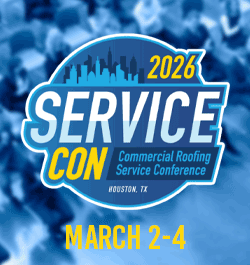
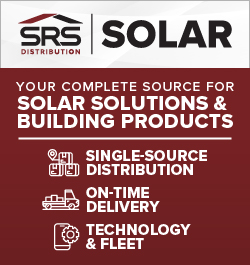











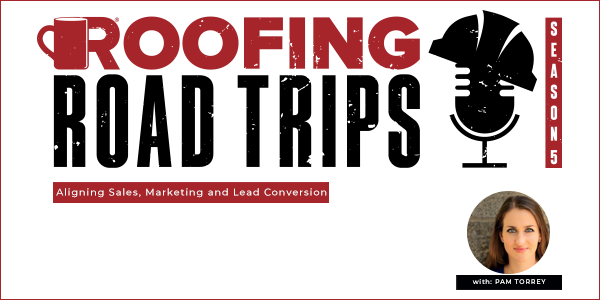
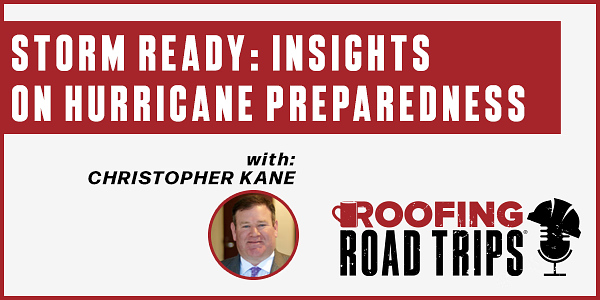
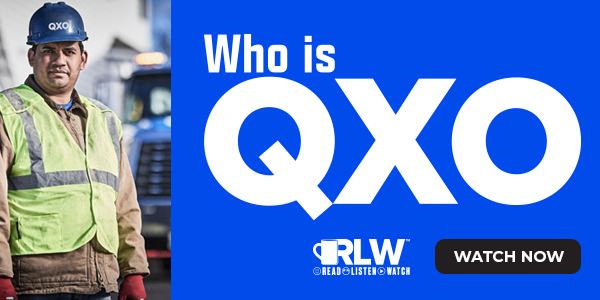



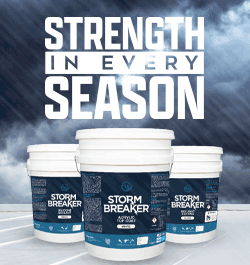
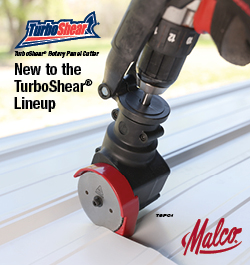

Comments
Leave a Reply
Have an account? Login to leave a comment!
Sign In